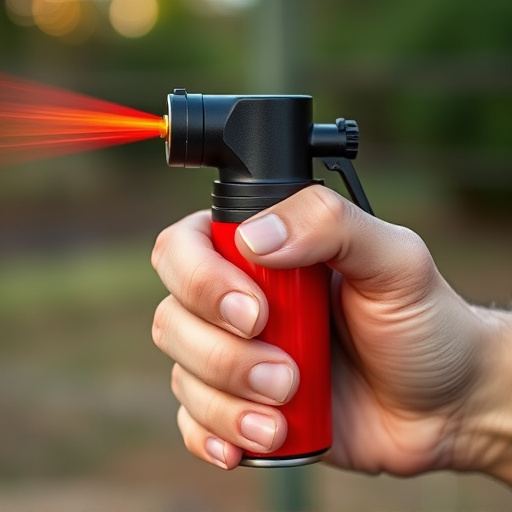Proper pepper spray storage and shelf life management is crucial for maintaining its effectiveness in crowd control. Law enforcement must store it in cool, dry conditions away from direct sunlight with a 2-5 year shelf life (varying by manufacturer). This involves regular maintenance like checking expiration dates, securing storage areas behind locked doors, and cleaning canisters after each use. Optimal pepper spray storage methods protect against environmental degradation, ensure potency, and minimize risks during police operations.
In today’s dynamic law enforcement landscape, pepper spray stands as a critical tool in crowd control. This article delves into the multifaceted aspect of pepper spray, offering insights into its role, safe handling, and storage procedures. We explore key factors influencing its shelf life, providing essential knowledge for both professionals and enthusiasts. Understanding Pepper Spray Storage and Shelf Life is paramount for effective deployment and ensuring the safety of all involved.
- Understanding Pepper Spray: Its Role in Crowd Control
- Police Procedures for Safe Pepper Spray Storage and Handling
- Factors Affecting Pepper Spray Shelf Life: What You Need to Know
Understanding Pepper Spray: Its Role in Crowd Control
Pepper spray is a non-lethal weapon that plays a significant role in crowd control by temporarily disabling individuals, allowing law enforcement to regain control and ensure public safety. It works by causing irritation and pain in the eyes, nose, and respiratory system, leading to temporary blindness and difficulty breathing. This disruption enables officers to subdue aggressive or volatile individuals, prevent further damage, and facilitate peaceful resolution.
Proper storage and understanding of pepper spray’s shelf life are crucial for its effectiveness. Pepper spray should be kept in a cool, dry place away from direct sunlight. It has a typical shelf life of 2-3 years when stored correctly, but this can vary based on the manufacturer’s recommendations. Regular maintenance, such as checking expiration dates and ensuring proper sealing, is essential to guarantee its potency when needed.
Police Procedures for Safe Pepper Spray Storage and Handling
Police procedures for safe pepper spray storage and handling are critical to ensure its effectiveness and minimize risks. First, pepper spray must be stored in secure, designated areas with controlled temperatures and away from direct sunlight. Many departments recommend storing it behind locked doors or in a secured cabinet to prevent unauthorized access. The shelf life of pepper spray is typically around 3-5 years, depending on the manufacturer’s guidelines; regular inspections are necessary to ensure its potency remains intact.
Proper handling involves wearing protective gear, including gloves and eye protection, when dispensing the spray. Officers should be trained in the correct usage techniques, such as aiming for the eyes and nose, to maximize impact while minimizing collateral damage. After each use, canisters should be cleaned and inspected for any signs of damage or deterioration before being stored again.
Factors Affecting Pepper Spray Shelf Life: What You Need to Know
The effectiveness of pepper spray is significantly influenced by its storage and shelf life. Several factors play a crucial role in determining how long it remains potent. One of the primary considerations is environmental conditions, especially temperature and humidity levels. Extreme heat or prolonged exposure to moist environments can accelerate the degradation process, rendering the spray less effective over time. Proper storage involves keeping it in cool, dry places away from direct sunlight, which helps maintain its chemical integrity.
Additionally, the quality and manufacturing processes of the pepper spray itself are essential. High-quality sprays often have longer shelf lives due to better preservation methods and ingredients. Always check the expiration date or “use by” label, as these provide valuable insights into the product’s viability. Regular rotation of stock and ensuring first-in, first-out practices can help maintain optimal performance when it comes to crowd control during police operations.
In conclusion, pepper spray is a valuable tool in crowd control, but proper storage and handling are crucial to ensure its effectiveness. Understanding the factors affecting its shelf life and adhering to safe police procedures for storage and use can help maintain this crucial resource’s integrity. By being aware of these aspects, law enforcement agencies can maximize their readiness and minimize risks associated with pepper spray use.
